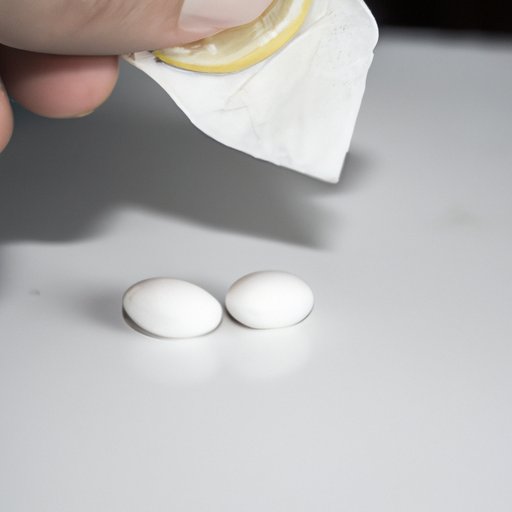
Introduction
Fever is a common symptom of many illnesses. It occurs when the body’s internal temperature rises above its normal range of 97.7-99.5°F (36.5-37.5°C). While fever itself is usually not harmful, it can cause discomfort and lead to complications in certain cases. Therefore, it is important to know how to reduce fever and when to seek medical attention.
Practical Home Remedies to Reduce Fever
One of the easiest and most effective ways to reduce fever is to use a cool compress. This can be done by placing a damp, cool washcloth on the forehead, armpits, or groin. Another option is taking a lukewarm bath, which can help lower the body’s internal temperature.
Drinking plenty of fluids is also important when you have a fever. Water, clear broths, and other liquids can prevent dehydration and help flush out toxins from the body. Dressing in light, loose clothing can also help regulate body temperature and promote sweating.
Moreover, keeping your environment cool is crucial for reducing fever. Use a fan or air conditioning to circulate cool air, and avoid direct sunlight or other sources of heat. Furthermore, natural remedies such as herbal teas or supplements may also provide relief from fever symptoms without the use of medication, which may have side effects.
Over-the-Counter Medications for Reducing Fever
If home remedies are not enough to reduce your fever, over-the-counter (OTC) medications may be helpful. Acetaminophen and ibuprofen are two commonly used OTC medications for reducing fever. However, it is important to follow dosage guidelines carefully and avoid taking more than the recommended amount. Overdosing on these medications can result in liver or kidney damage, stomach ulcers, or other complications.
When to Seek Medical Attention for a Fever
In most cases, a fever is not a medical emergency and can be treated at home. However, certain signs and symptoms indicate a need for medical attention. Seek medical help if you experience a fever of 103°F (39.4°C) or higher, have difficulty breathing, suffer from seizures, or have a rash that does not fade when you press it.
Furthermore, specific populations such as infants, young children, and the elderly are at higher risk of complications from fever and may require medical attention even for lower-grade fevers.
Importance of Rest and Recovery for Reducing Fever
While it is important to take steps to reduce fever, allowing your body time to rest and recover is just as important. This involves staying home from work or school, getting plenty of rest, and creating a comfortable environment for sleep.
During this time, it is important to eat healthy foods that provide nutrients to support the immune system. Additionally, foods such as chicken soup, tea, and ginger may help reduce fever and relieve symptoms.
Alternative Therapies for Reducing Fever
Alternative therapies such as acupuncture, massage, and aromatherapy may help reduce fever symptoms and promote relaxation. However, it is important to find a qualified practitioner and discuss any medical conditions or medications with them before beginning treatment.
Conclusion
In conclusion, fever is a common symptom of many illnesses, and while it is usually not harmful, it can be uncomfortable and lead to complications. Knowing how to reduce fever using practical home remedies, medications, and other methods is important for promoting healing and preventing complications. Remember to rest and take care of yourself, and seek medical attention if necessary.





